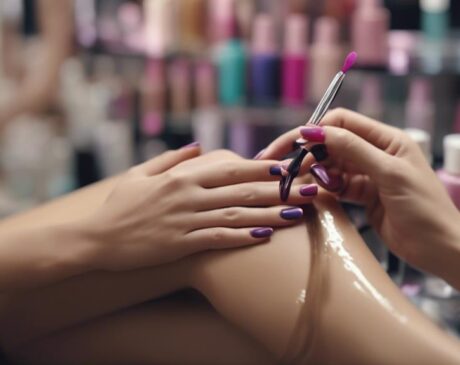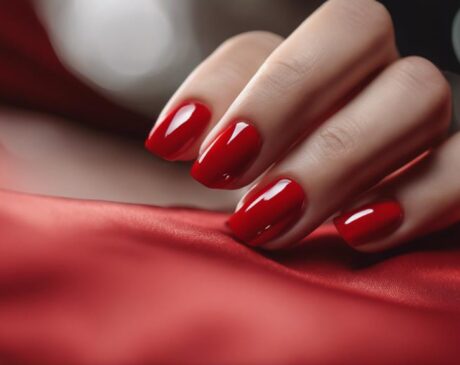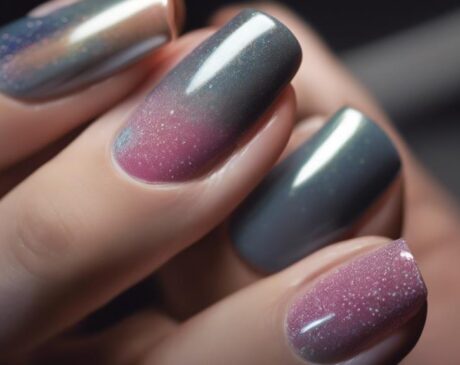Can I Glue My Natural Nail if It Breaks?
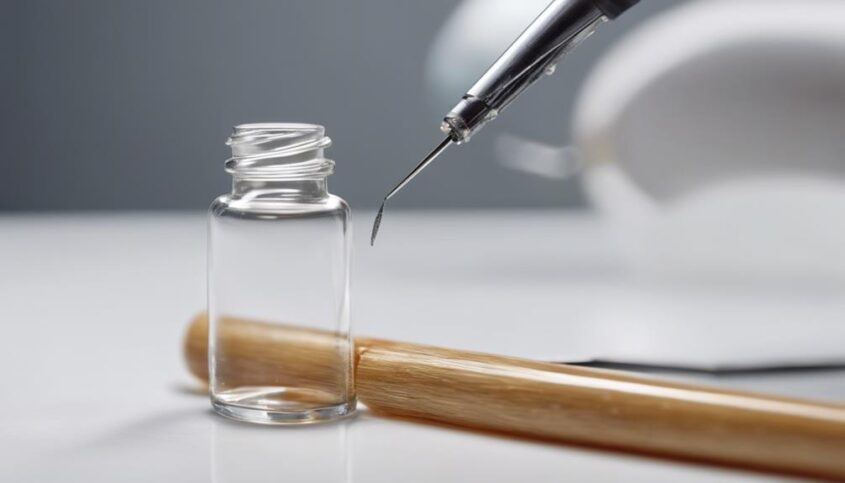
Gluing a broken natural nail is a suitable temporary fix. Clean the nail, trim, and file for better bonding. Apply glue carefully, pressing the broken part firmly. Finish by smoothing out rough edges and consider using clear nail hardener. Use glue meant for natural nails and follow safety precautions. Watch for signs of infection or allergic reactions. Remember, seeking professional help is necessary in case of persistent issues. Practice caution and follow proper maintenance for optimal nail health. Further details on types of nail glue, preparation steps, dos and don'ts, risks, and when to seek help are available for a comprehensive understanding.
Key Takeaways
- Clean the nail before gluing to remove dirt and oils.
- Use a high-quality nail glue specifically designed for natural nails.
- Press the broken piece firmly against the glued surface for a secure bond.
- Avoid applying too much glue to prevent uneven pressure distribution.
- Monitor for any signs of infection or allergic reactions after gluing.
Understanding Natural Nail Breakage
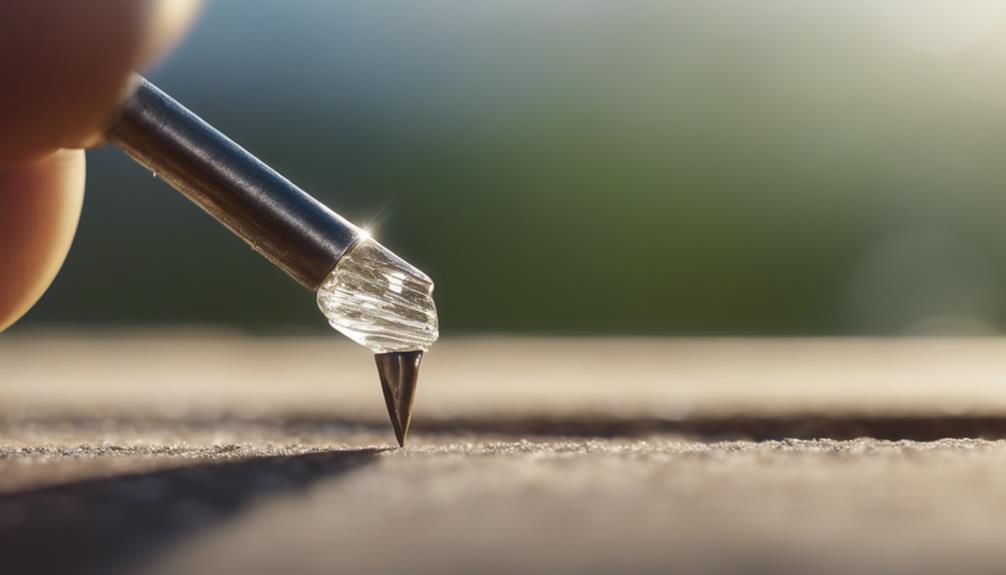
Natural nail breakage, a common occurrence among individuals, can be attributed to various factors such as trauma, lack of proper care, and environmental stressors. When a natural nail breaks, it can be a frustrating experience, especially for those who take pride in the appearance of their nails. Understanding the underlying causes of nail breakage is crucial in preventing future occurrences and maintaining healthy nails. Trauma, such as accidentally hitting the nail against a hard surface, can weaken the nail structure and lead to breakage. Additionally, a lack of proper nail care, including moisturizing and protecting the nails, can make them more susceptible to breakage. Environmental stressors like exposure to harsh chemicals or extreme temperatures can also contribute to nail fragility.
Types of Nail Glue to Consider
When addressing the repair of a broken natural nail, selecting the appropriate type of nail glue is a critical consideration to ensure effective and lasting results. Various types of nail glues are available on the market, each offering unique benefits tailored to different needs. One popular option is cyanoacrylate-based nail glue, known for its quick-drying and strong bonding properties. This type of glue is ideal for quick fixes and temporary repairs. For those seeking a longer-lasting solution, gel nail glue is a great choice. Gel nail glue provides a more flexible and durable bond, perfect for maintaining the integrity of the natural nail over an extended period. Acrylic resin-based nail glue is another option, offering a strong and sturdy bond suitable for more serious nail breaks. By carefully considering the type of nail glue that best suits your needs, you can ensure a successful and seamless repair of your broken natural nail.
Preparing the Broken Nail
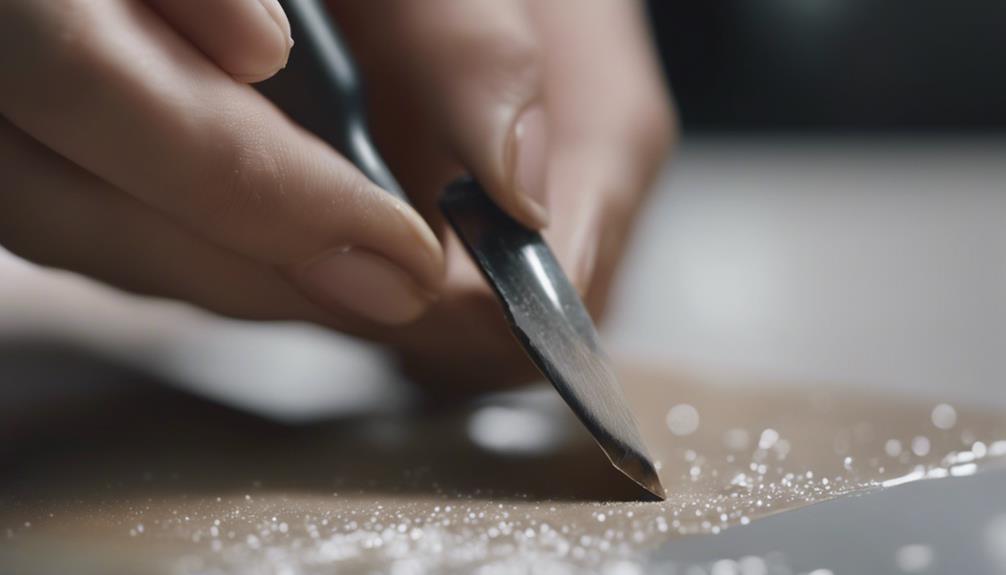
Effective repair of a broken nail begins with thorough preparation of the damaged area. Before applying any glue, it is essential to ensure that the nail is clean and free of any oils or debris that could hinder the bonding process. Here are some key steps to prepare the broken nail for repair:
- Clean the Nail: Use a gentle nail polish remover to clean the nail surface and remove any oils or residues that could affect the adhesion of the glue.
- Trim any Jagged Edges: Trim any jagged or uneven edges of the broken nail using a nail clipper to create a smooth surface for the repair.
- File the Nail: Gently file the edges of the broken nail to smooth out any rough edges and ensure a snug fit when reattaching the broken piece.
- Avoid Water: Keep the nail dry before applying the glue, as moisture can interfere with the bonding process.
Steps to Glue a Natural Nail
To securely glue a broken natural nail back together, it is crucial to follow a precise set of steps to ensure a durable and lasting repair. Begin by gently cleaning the broken nail with a mild soap and water to remove any dirt, oil, or debris. Next, ensure the nail is completely dry before proceeding. Using a high-quality nail glue, carefully apply a small amount to one side of the broken nail. Press the broken piece firmly against the glued surface, holding it in place for at least 30 seconds to allow the glue to set. Avoid applying excessive pressure to prevent further damage to the nail. Once the glue has dried, file the repaired nail gently to smooth out any rough edges and shape it to match the rest of your nails. For added strength and protection, consider applying a clear nail hardener or top coat over the repaired area. Following these steps diligently will help you achieve a seamless and secure repair for your broken natural nail.
Dos and Donts of Nail Gluing
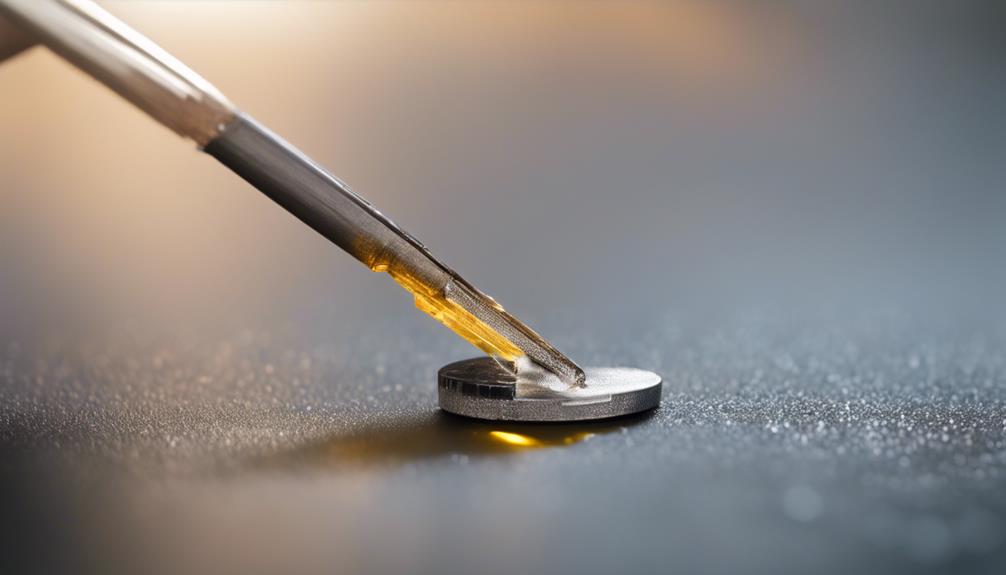
When it comes to gluing a broken natural nail, it is essential to adhere to certain dos and don'ts. Ensuring nail glue safety, employing proper application techniques, and being aware of the risks associated with improper gluing are crucial aspects to consider. By following these guidelines, you can effectively repair your natural nail without causing further damage.
Nail Glue Safety
What precautions should be taken to ensure safe and effective nail gluing? Nail glue safety is crucial when repairing a broken natural nail. To ensure a successful application without any adverse effects, consider the following dos and don'ts:
- Do: Use nail glue in a well-ventilated area to avoid inhaling fumes.
- Don't: Apply nail glue directly onto your skin as it can cause irritation.
- Do: Store nail glue in a cool, dry place away from direct sunlight to maintain its effectiveness.
- Don't: Use nail glue that has expired or changed consistency as it may not bond effectively.
Proper Application Techniques
Considering the significance of nail glue safety, mastering proper application techniques is essential for effectively gluing a broken natural nail. To ensure successful results, follow these dos and don'ts of nail gluing:
| Dos | Don'ts | Tips |
|---|---|---|
| Clean the nail surface | Use too much glue | Apply glue sparingly |
| Hold the nail firmly | Rush the application | Allow time to dry |
| Use a small amount | Forget to cap the tip | Recap the glue properly |
Risks of Improper Gluing
Improper gluing of a broken natural nail can lead to various risks and complications if dos and don'ts of nail gluing are not followed diligently. To ensure a safe and effective repair, consider the following:
- Do use nail glue specifically formulated for natural nails.
- Don't apply too much glue, as it can cause the nail to lift.
- Do clean the nail surface thoroughly before applying glue.
- Don't ignore any signs of infection or allergic reactions after gluing.
Following these dos and don'ts will help minimize the risks associated with improper gluing, ensuring a successful and healthy nail repair.
How to Care for a Glued Nail
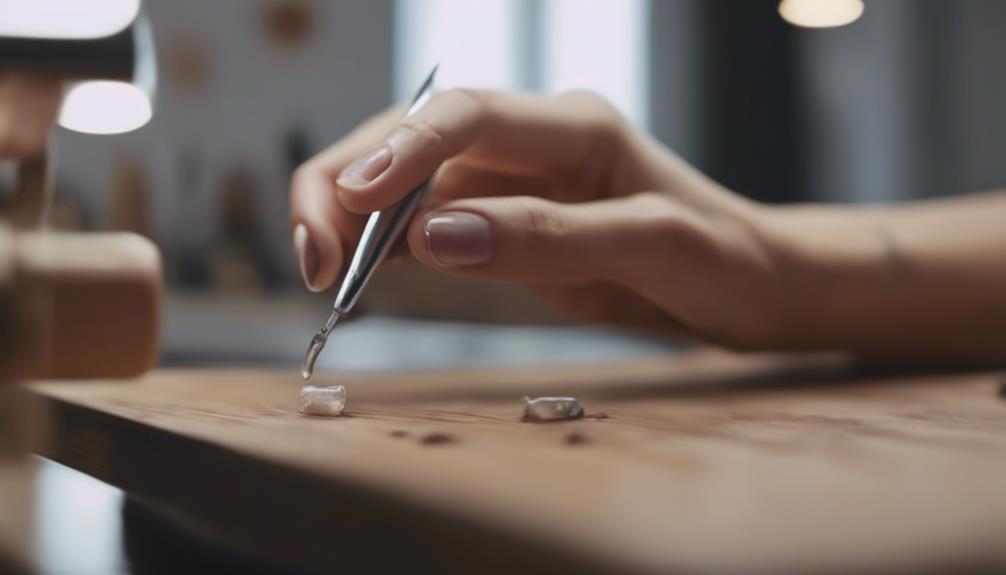
When caring for a glued nail, it is essential to follow proper glue application tips to ensure a secure bond. Additionally, employing nail protection methods can help prevent further damage or breakage. Lastly, understanding the removal process advice is crucial to maintain nail health and integrity.
Glue Application Tips
To properly care for a glued natural nail, it is essential to follow specific glue application tips.
- Choose the Right Glue: Select a high-quality nail glue that is formulated for natural nails to ensure a strong and lasting bond.
- Clean and Dry Nails: Thoroughly clean your natural nails to remove any oils or debris before applying the glue. Ensure your nails are completely dry to promote better adhesion.
- Apply a Thin Layer: Use a small amount of glue to avoid excess and potential clumping. A thin layer will provide a secure bond without creating a bulky appearance.
- Avoid Excessive Pressure: When pressing the broken nail back into place, apply gentle pressure to prevent damaging the nail or causing discomfort.
Nail Protection Methods
After applying glue to fix a broken natural nail, it is important to implement proper nail protection methods to ensure the longevity and durability of the repair. One innovative way to care for a glued nail is to apply a layer of clear nail polish over the glued area. This not only adds an extra level of protection but also helps to blend the repair seamlessly with the rest of the nail. Additionally, using a strengthening nail treatment regularly can fortify the repaired nail and prevent further breakage. It is advisable to avoid exposing the glued nail to excessive water or harsh chemicals to maintain the integrity of the repair. By following these nail protection methods, you can help your glued natural nail stay intact and looking great.
Removal Process Advice
Proper care and maintenance of a glued natural nail are essential to ensure its longevity and appearance. When it comes to removing a glued nail, follow these innovative tips for optimal care:
- Soak in Acetone: Use acetone to gently soak the glued nail, allowing the glue to loosen without damaging the natural nail.
- Gentle Buffing: Carefully buff the nail surface after removal to smooth out any residue or rough patches.
- Moisturize Regularly: Keep the natural nail hydrated with a nourishing cuticle oil or moisturizer to prevent dryness and brittleness.
- Avoid Harsh Chemicals: Refrain from exposing the nails to harsh chemicals or excessive water to maintain their strength and health.
Risks of Gluing Natural Nails
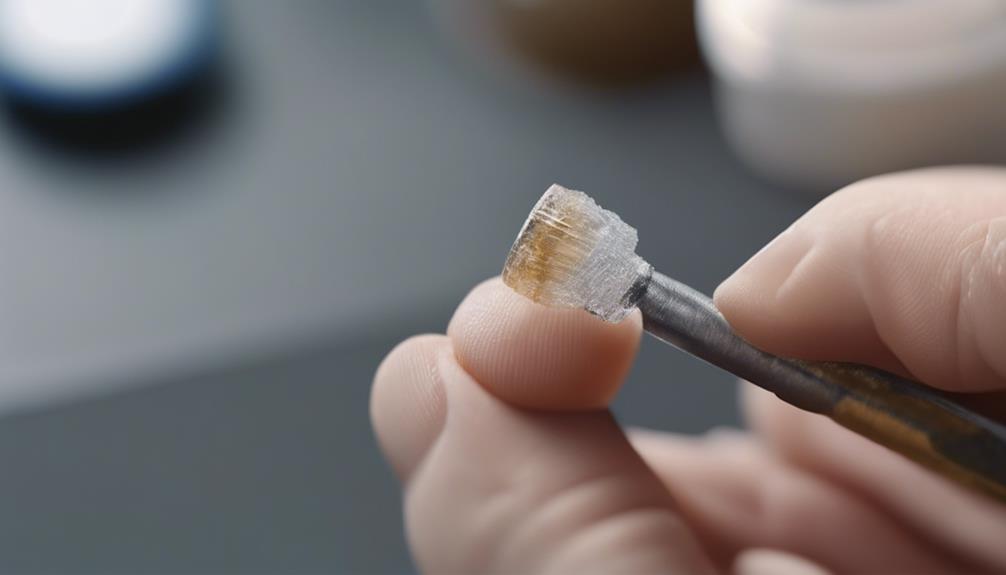
When considering the risks of gluing natural nails, it is crucial to be aware of potential adverse effects on nail health and integrity. While gluing a broken natural nail can be a quick fix, it may lead to several issues if not done correctly. One of the primary risks is the development of fungal infections. When moisture becomes trapped between the glued nail and the natural nail bed, it creates an ideal environment for fungus to thrive, jeopardizing the overall health of the nail.
Moreover, using the wrong type of glue or applying it improperly can result in allergic reactions or irritation to the surrounding skin. This can cause redness, swelling, or even pain, further complicating the situation. Additionally, if the broken nail is not aligned correctly and securely glued back in place, it may lead to uneven pressure distribution on the nail, increasing the likelihood of further damage or breakage.
Therefore, when attempting to glue a broken natural nail, it is essential to exercise caution, use appropriate products, and seek professional advice if unsure to prevent these potential risks and maintain nail health.
When to Seek Professional Help
Seeking professional assistance is advisable when dealing with severe nail damage or persistent issues related to gluing a broken natural nail. In such cases, a trained nail technician or a dermatologist can provide expert guidance and solutions. Here are some key indicators that suggest it's time to seek professional help:
- Excessive Pain: If you experience intense pain or discomfort after gluing a broken natural nail, it is essential to consult a professional to assess the underlying issue.
- Signs of Infection: Any signs of infection, such as redness, swelling, or discharge around the broken nail, require immediate attention from a healthcare provider.
- Persistent Breakage: If your natural nails frequently break or if the glued nail continues to break despite your best efforts, a professional can help determine the root cause and provide appropriate treatment.
- Changes in Nail Color or Texture: Unusual changes in the color, texture, or shape of the glued nail could indicate an underlying health concern that a professional should evaluate.
Frequently Asked Questions
Can I Use Regular Super Glue to Fix a Broken Natural Nail?
While super glue might seem like a quick fix for a broken natural nail, it's not recommended due to its harsh chemicals and potential skin irritation. Opt for specialized nail glue or seek professional nail care.
How Long Does It Take for the Nail Glue to Fully Dry and Set?
The drying and setting time of nail glue can vary based on the product used, with some formulas drying in seconds and fully setting within minutes. It is recommended to follow the specific instructions of the nail glue for optimal results.
Are There Any Long-Term Effects of Regularly Gluing a Natural Nail?
Regularly gluing a natural nail may lead to long-term effects such as weakening the nail bed, causing potential damage or infections. It is advisable to seek professional advice and consider alternatives to prevent undesirable consequences.
Can I Still Wear Nail Polish Over a Glued Natural Nail?
Yes, nail polish can typically be applied over a properly glued natural nail. However, ensure the glue is fully dried and the nail surface is smooth for optimal adherence of the polish. Regularly check for any signs of lifting or damage.
Is It Safe to Apply Nail Glue if I Have Sensitive Skin or Allergies?
Ensuring safety in nail glue application for individuals with sensitive skin or allergies is paramount. Prioritize patch testing on a small area to assess any adverse reactions. Opt for hypoallergenic formulas and consult a dermatologist if concerns persist.

